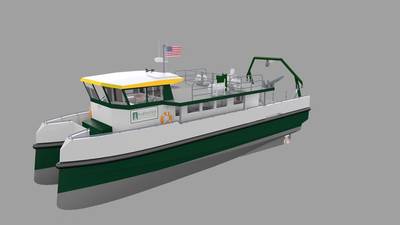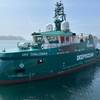Derecktor Wins Deal to Build Hybrid RVl for University of Vermont
The University of Vermont (UVM) has ordered what is touted as the first hybrid research vessel, a project which brings together Derecktor Shipyards, BAE Systems and Chartwell Marine.
The 19-meter catamaran will be designed for low-emission, low-fuel-burn operations and is set for launch in April 2022.
Chartwell Marine’s hybrid design, which is powered by two Cummins QSB 6.7m 306hp diesel engines and two BAE AC traction motors, will provide the University with a new research and instruction platform to facilitate its advanced research operation. The hybrid propulsion method will enable all-electric operation for trips less than two hours in duration, which represents 60% of all current UVM voyages.
This survey suite will be bolstered by InterOcean Systems, in partnership with the Woods Hole Oceanographic Institute.
Together, IOS & WHOI have developed a unique new winch system, which will enable UVM to operate more efficiently than ever before from both personnel and power perspectives. The winches are directly driven to reduce drivetrain losses and can be operated using a single wireless joystick. With its novel, compact design, this critical element represents another building block that establishes the hybrid science vessel as a transformative frontrunner in its class.
These benefits will be made possible by an advanced new catamaran hull form that has been optimized via computational flow dynamics (CFD) modeling to minimize resistance at low speeds, accommodate battery storage and ensure maximum stability.
The university envisions the vessel will be used as a mobile ‘classroom’ for undergraduate field trips as well as a platform for graduate students researching the Lake Champlain environment. In addition, it will also provide a way for engineering students to study the future of hybrid vessel design.
“The future of vessel procurement will look quite different to its current form today, as operators worldwide begin to respond to increasingly stringent requirements for low emission craft,” said Andy Page, Naval Architect and Managing Director, Chartwell Marine. “The USA in particular is taking a lead in the adoption of marine emissions regulations, and, with emerging industries such as offshore wind changing the landscape of maritime activity off the East Coast, it’s great to see a regional institution like the University of Vermont take the initiative with the adoption of hybrid technology. There are certainly lessons to be learnt from this project that will be highly beneficial in the development of hybrid vessels for the offshore wind market in the US and further afield.”












